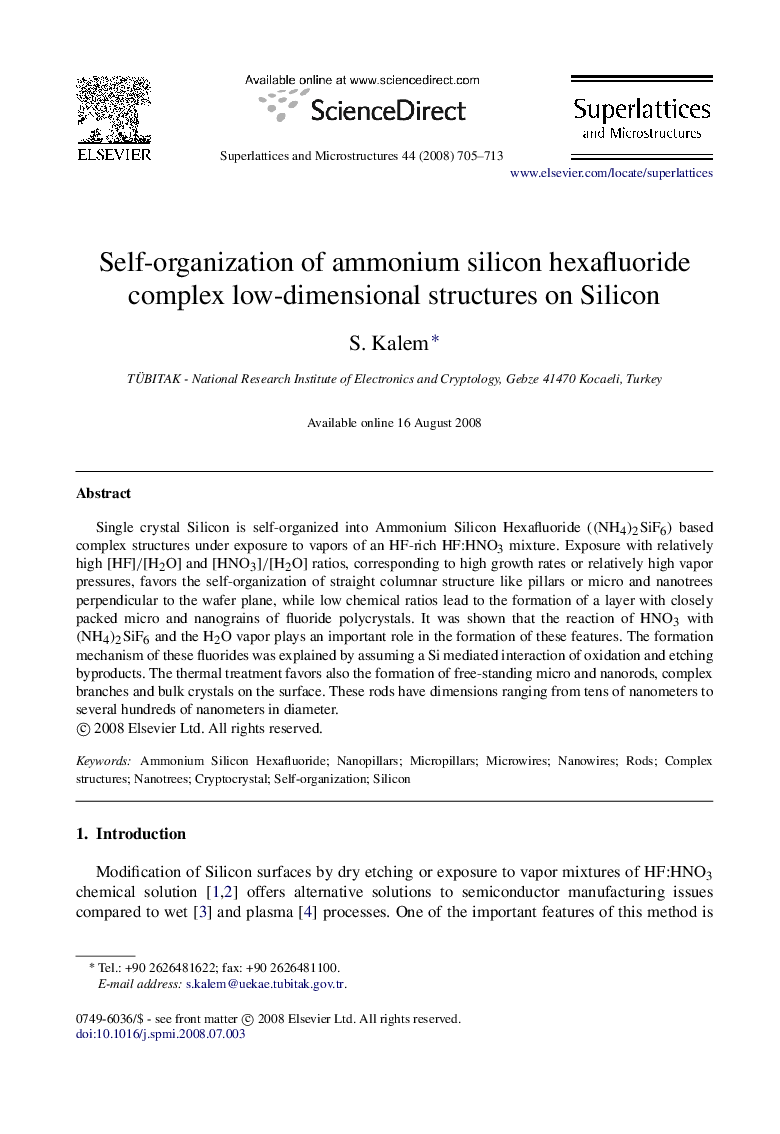| Article ID | Journal | Published Year | Pages | File Type |
|---|---|---|---|---|
| 1555055 | Superlattices and Microstructures | 2008 | 9 Pages |
Single crystal Silicon is self-organized into Ammonium Silicon Hexafluoride ((NH4)2SiF6) based complex structures under exposure to vapors of an HF-rich HF:HNO3 mixture. Exposure with relatively high [HF]/[H2O] and [HNO3]/[H2O] ratios, corresponding to high growth rates or relatively high vapor pressures, favors the self-organization of straight columnar structure like pillars or micro and nanotrees perpendicular to the wafer plane, while low chemical ratios lead to the formation of a layer with closely packed micro and nanograins of fluoride polycrystals. It was shown that the reaction of HNO3 with (NH4)2SiF6 and the H2O vapor plays an important role in the formation of these features. The formation mechanism of these fluorides was explained by assuming a Si mediated interaction of oxidation and etching byproducts. The thermal treatment favors also the formation of free-standing micro and nanorods, complex branches and bulk crystals on the surface. These rods have dimensions ranging from tens of nanometers to several hundreds of nanometers in diameter.
